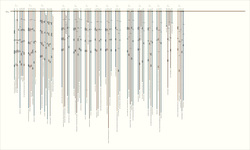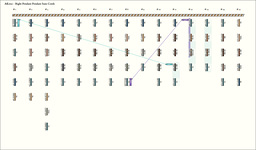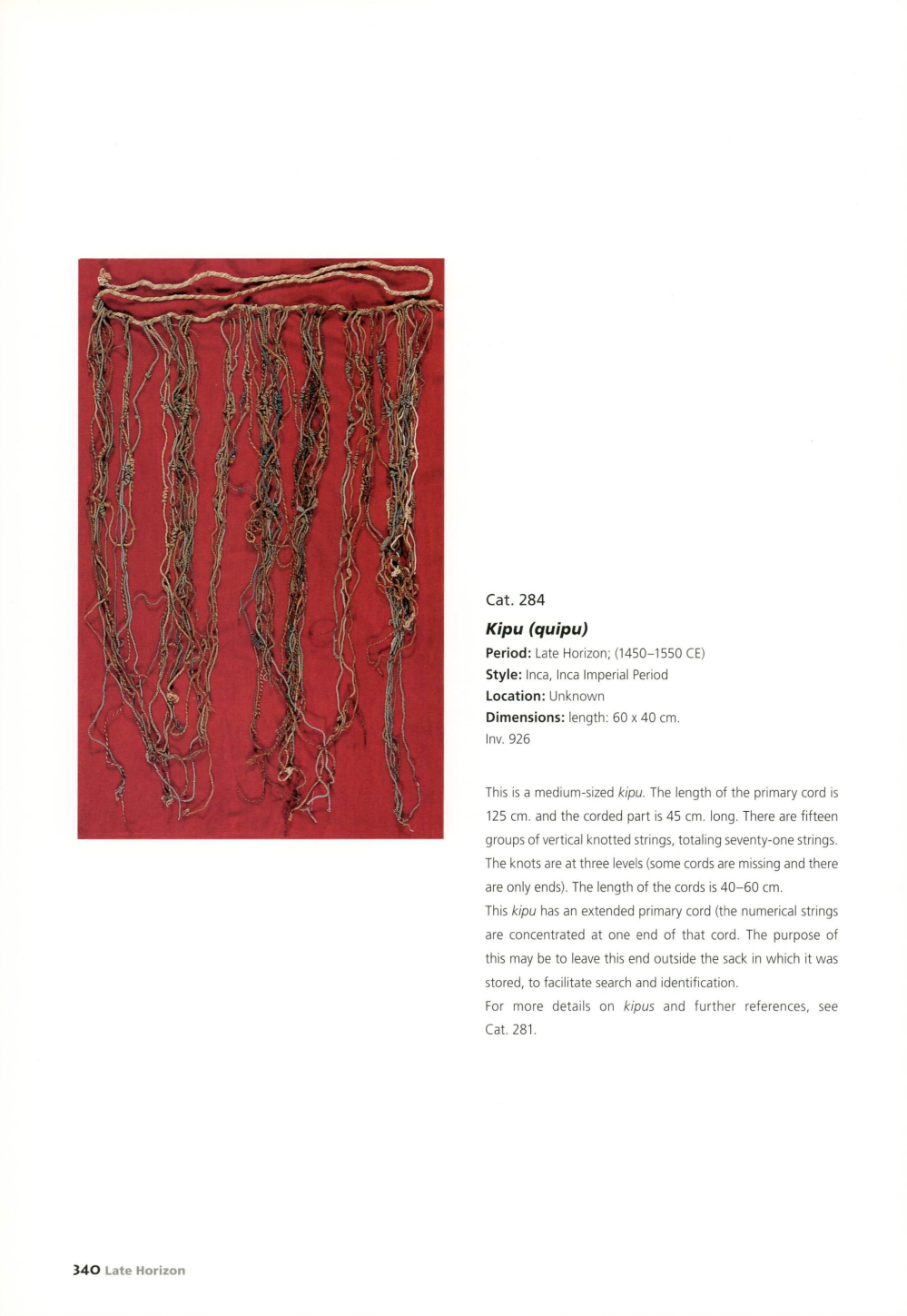AK002 - Catalog Information
| Section | Information | ||
|---|---|---|---|
| Statistics: |
|
||
| AK002 |  |
||
| Pendant Pendant Sum |  |
||
| Indexed Pendant Sum |  |
||
| DataFile: | AK002 |
||
| Notes: | Fieldguide Notes: Author's Notes This khipu was part of the Maiman collection, a set of khipus gathered from deaccesioning of the Haifa museum as well as other sources. Another khipu in the collection is referenced in Bat-ami Artzi's article The Secret of the Knot: Khipu No. 936 from the Maiman Collection. The collection is also described in the book Weaving the AfterLife. The conservation of this khipu reminds the author of the botched restoration of a 19th century Italian church fresco by an elderly grandmother. Saoirse swears that she has a similar grandmother. Somewhere along the way, a person who received this khipu decided to hot? glue? the cords to a piece of red velour. They didn't even do a particularly good job of that, with many of the cords tangled along the way. Also, along the way a number of cords appear to have had their long knot deliberately cut off. A knotectomy. This khipu has a number of intriguing features:
The khipu is described in the book Weaving the Afterlife:  Cat. 284 Period: Late Horizon; (1450-1550 CE) Style: Inca, Inca Imperial Period Location: Unknown Dimensions: length: 60 x 40 cm. Inv. 926 This is a medium-sized khipu. The length of the primary cord is 125 cm. and the corded part is 45 cm. long. There are fifteen groups of vertical knotted strings, totaling seventy-one strings. The knots are at three levels (some cords are missing and there are only ends). The length of the cords is 40-60 cm. This khipu has an extended primary cord (the numerical strings are concentrated at one end of that cord. The purpose of this may be to leave this end outside the sack in which it was stored, to facilitate search and identification. For more details on khipus and further references, see Cat. 281. Primary Cord Section Faded folded 4 ply cord, Broken and Re-plyed from 11-13.5 cm. Some plys folded Cordage is roughly made, plys are not clean Group Section Groups of 4 pendants #9, #12, #13 are likely missing black(ish) cord in middle Cords are paired in groups 1,2,3 Group 1 has 6 cords composed of 3 paired cords Group 2 cords are tightly clustered. 6th cord, has fibers folded back on themselves after end knot. 4th cord has 12 double plied threads. Why? Group 3 has 8 cords grouped by pairs Group 4 - cords look like they have been moved over time Group 5 and 6 - cords tightly clustered Group 7 - 5 cords - last cord is looped around pendant. Group 8 - 5 cord tightly clustered Group 9 - 4 cords made of two pairs Group 10 - Tightly clustered group of 5 Group 11 - Tightly clustered group of 5 Group 12 - 4 cords of 2 pairs, or 5 cords, with one cord missing -unclear Group 13 - 4 cords - potentially missing barberpole blue/light tan Group 14 - Group of 5 tightly clustered. 3rd cord at midpoint of attachment reveals fibers folded back on themselves on remaining ply - indicating construction technique of original barberpole. Group 15 - Group of 5 tightly clustered. Last cord has fibers folded back on themselves after end knot. Fiber construction of this khipu is very irregular. Cords vary in thickness, even along one cord. Cords occasionally have mixed fiber types (grass?) in cord. Accidental or intentional? Appears accidental. |